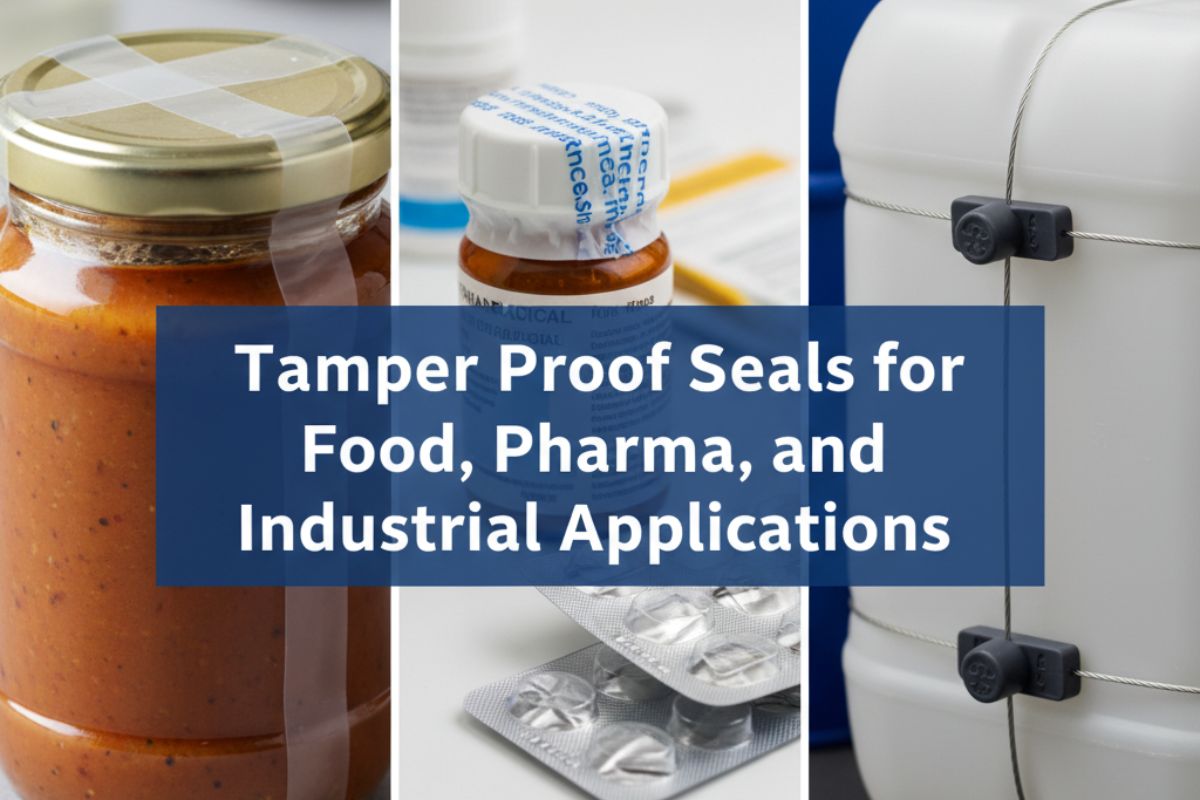Trust and safety have become decisive factors in consumer choice. Whether safeguarding medication, packaged food, or industrial components, a tamper proof seal serves as a silent guardian of authenticity. It prevents unnoticed interference, assures regulatory compliance, and signals that a product has reached its destination untouched. The science behind these seals has evolved, combining material engineering, printing precision, and smart tracking technologies that meet the growing demand for transparency.
Why Tamper Proof Seals Matter in Product Integrity
Product safety goes far beyond packaging aesthetics. A tamper proof seal acts as a barrier against contamination, theft, or substitution. Once applied, any breakage or removal attempt leaves visible evidence, alerting suppliers, inspectors, or customers to possible interference.
The concept extends beyond simple protection. It creates an unspoken agreement between producer and consumer — a visible promise of quality control and ethical manufacturing. Industries that handle sensitive or perishable goods rely on this assurance to maintain brand reputation and consumer confidence.
Food Industry: Safeguarding Freshness and Consumer Trust
Food packaging is highly vulnerable to tampering, especially in distribution chains involving multiple handlers. Tamper proof seals prevent unverified access and keep packaged contents consistent with safety standards.
From bottled beverages to sealed meal kits, adhesive or heat-induction seals indicate freshness. Many manufacturers use pressure-sensitive labels or shrink bands that must be broken before opening. Beyond physical protection, such seals communicate transparency and hygiene to end consumers.
Smart technology is also emerging in this field. QR codes or serialised labels embedded within seals allow customers to verify source details instantly, building accountability throughout the supply chain. These small design elements reduce counterfeiting risks and meet increasing regulatory demands for traceability.
Pharmaceutical Sector: Protecting Patient Safety and Compliance
No sector faces stricter scrutiny than pharmaceuticals. A tamper proof seal plays a critical role in maintaining drug safety and preventing diversion. Regulations in many regions require manufacturers to apply visible tamper evidence on both primary and secondary packaging.
The seal’s primary function is to confirm product integrity — showing whether a bottle, vial, or blister pack has been opened after leaving the production line. Materials used often include holographic foils, void-revealing adhesives, and frangible films that cannot be resealed once disturbed.
Beyond security, these seals carry track-and-trace identifiers linked to digital serialization databases. This integration supports anti-counterfeit programs and provides health authorities with verifiable data trails. For patients, a clearly intact seal becomes a visual reassurance that their medication is safe, legitimate, and correctly handled.
Industrial Applications: Safeguarding Equipment and High-Value Goods
Industrial supply chains deal with costly machinery, chemicals, and precision parts that must remain uncontaminated until use. Tamper proof seals help detect interference at any stage — from factory shipment to field installation.
Examples include sealing fuel drums, control panels, calibration instruments, or safety gear. These seals may combine strong adhesives with printed identification numbers or barcodes to create a trackable audit trail. In sectors such as energy or aerospace, where even minor manipulation could cause safety incidents, tamper evidence forms part of the operational risk-management protocol.
The industrial market also employs temperature-resistant and chemical-resistant materials that withstand extreme conditions. This durability ensures the seal maintains its security signal even in demanding environments.
Design and Material Considerations
The effectiveness of a tamper proof seal depends on selecting the right combination of material, adhesive strength, and visibility of evidence. Common options include:
-
Void labels: Leave a “VOID” pattern or symbol when removed, confirming interference.
-
Breakable films: Tear instantly under force, preventing resealing.
-
Shrink sleeves: Create a full-body seal around closures, highly visible on bottles and containers.
-
Holographic seals: Offer visual complexity difficult to replicate, suitable for high-value items.
Printing technology also adds another security layer. Sequential numbering, micro-text, or hidden images make replication difficult, discouraging tampering or forgery. Each design choice contributes to physical security and brand credibility.
Sustainability and Future Directions
Environmental responsibility is shaping how tamper evidence is produced. Manufacturers are moving toward recyclable films, biodegradable adhesives, and solvent-free inks to align with green-packaging goals.
Emerging research points to electronic and digital verification methods. Near-field communication (NFC) tags and sensor-based seals can record when and where packaging was opened. This evolution blurs the boundary between physical packaging and digital monitoring, supporting smarter and more sustainable production cycles.
As these technologies mature, future tamper proof systems will likely combine visual, physical, and digital cues, strengthening supply-chain transparency while reducing material waste.
Frequently Asked Questions (FAQs)
Q1: What defines a tamper proof seal?
A tamper proof seal is a packaging component designed to show visible signs of interference once disturbed. It confirms that a product has not been opened, altered, or contaminated after manufacturing.
Q2: Are tamper proof seals mandatory in the pharmaceutical industry?
Yes, most drug-safety regulations require visible tamper evidence on medicine containers. The goal is to protect patients from counterfeit or compromised products.
Q3: Can tamper proof seals be eco-friendly?
Yes. Many suppliers now produce seals from recyclable films or biodegradable materials without sacrificing safety. Sustainable adhesives and low-impact inks are also increasingly available.
Q4: How do tamper proof seals prevent counterfeiting?
They incorporate features such as holograms, serial numbers, or digital verification codes that make replication difficult. Breaking or removing the seal exposes any attempt at substitution.
Q5: Are tamper proof seals reusable?
No. They are designed for single-use application. Once opened or damaged, they cannot be reattached without showing evidence of interference.
Conclusion
Tamper proof seals represent a quiet but vital element of product security across food, pharmaceutical, and industrial sectors. They build trust, uphold regulatory compliance, and protect both consumers and producers from potential harm.
Their evolution — from simple adhesive bands to intelligent digital identifiers — reflects the industry’s commitment to transparency and responsibility. As packaging continues to merge with smart technology, tamper proof seals will remain a cornerstone of safe, accountable, and sustainable production systems.
